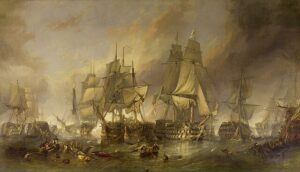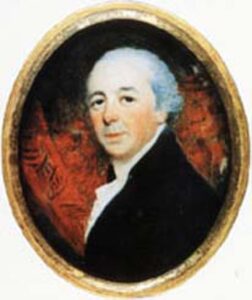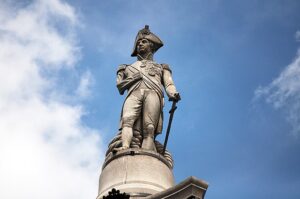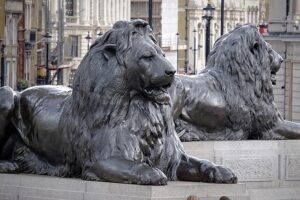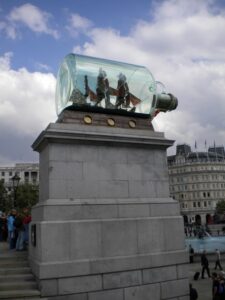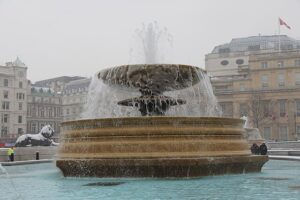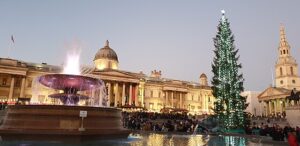A History of Trafalgar Square: Your Questions Answered
Date post added: 3rd September 2024
In the heart of Central London, in the City of Westminster to be precise, Trafalgar Square is probably the most famous public square in London. When we say it’s in Central London, we truly mean it. Trafalgar Square is the official centre – legally and geographically – of the capital.
You may well have walked through this pigeon-filled square to reach one of the wonderful attractions nearby. There’s the National Gallery and National Portrait Gallery to its north; Whitehall to the south; The Strand and St-Martin-in-the-Fields Church to its east; and not forgetting The Mall and Admiralty Arch to the south west. Charing Cross is the nearest train and tube station, with Piccadilly Circus within easy reach too.
But why’s it called Trafalgar Square? What’s happened here? And why on earth are there lions there? (Clue: it’s nothing to do with football shirts). We’re here to answer your many questions about this famous London landmark.
What historical event does Trafalgar Square commemorate?
Like many British landmarks, Trafalgar Square is named after a battle – one that Britain won. The Battle of Trafalgar was a battle in the Napoleonic Wars. The British fought against French and Spanish forces off Cape Trafalgar, Southern Spain, in 1805. Admiral Horatio Nelson led Britain to naval victory on the aptly named HMS Victory. Lord Nelson lost his life during the battle. More of which below…
What events led to the creation of Trafalgar Square?
Before Trafalgar Square became Trafalgar Square, it was the King’s Royal Mews between the 14th and 17th centuries. It wasn’t until the 19th century that the King’s mews moved to its current location at Buckingham Palace at the request of King George IV.
in 1812, George, then the Prince Regent, wanted the square to be redeveloped. Architect John Nash was in charge of the redesign. The plan didn’t run smoothly – and if you’ve seen an episode of Grand Designs, you’ll know that they never do. Work didn’t kick off until 1830, and sadly Nash died before it was completed.
When the National Gallery on the north side of the square was completed by William Wilkins in 1838, it renewed enthusiasm for the square’s redevelopment. Sir Charles Barry, the architect responsible for the Houses of Parliament, was asked to take over. The construction project took five years, from 1840 to 1845.
Why is Lord Nelson in Trafalgar Square?
As we mentioned earlier, Lord Nelson lost his life during the Battle of Trafalgar. The English Royal Navy hero wasn’t in the running for a statue initially. King William IV was earmarked for that honour. But in 1838, when Trafalgar Square’s redevelopment project started up, it was decided that it would be the perfect place to honour the naval admiral.
A competition was launched, to find a design for a statue of Nelson and William Railton was the lucky winner. Railton proposed a 52 metre tall (170ft) Corinthian column and statue, and it was built between 1841 and 1843. On top of the column stands a 5.5 metre (18ft) tall statue of Lord Nelson, created by Edward Hodges Baily. The pedestal depicts Nelson’s most famous battle scenes – the Battle of the Nile, the Battle of Copenhagen, the Battle of Cape St Vincent and his death at the Battle of Trafalgar. At the base of Nelson’s column there are four bronze reliefs of Nelson’s naval victories that were added between 1849 and 1854.
London Walks aficionado, David, has many interesting points to share about Nelson’s Column. Points that perhaps you’d never notice if they weren’t highlighted by someone who knows their stuff. Here are the top three.
- The statue’s height is significant: “It’s just under 170 feet high. That’s from the top of Nelson’s hat down to the pavement. That’s said to be the distance from HMS Victory’s main masthead to the quarterdeck. As phallic symbols go, it takes some beating.”
- The statue’s position is significant: “Nelson’s statue is facing the Admiralty, facing the general direction of Plymouth, and the direction of Cape Trafalgar in Spain.”
- A spooky coincidence?: “Only to be seen with binoculars. Nelson’s column has been struck with lightning just once. The lightning bolt hit the front of the top of Nelson’s left shoulder. Exactly the spot where the French sniper’s musket ball struck the Admiral.”
Why are there lions in Trafalgar Square?
The committee in charge of planning Nelson’s Column decided that lions would make the perfect finishing touch. Known for being brave and fierce, lions represent Lord Nelson’s heroism.
Artist Sir Edwin Landseer accepted the commission on 31st July 1858. The first thing to know about Sir Edwin Landseer is he wasn’t a sculptor. He was a painter. Admittedly, he was an animal painter (and an exceptionally good one), but he was a painter all the same – not a sculptor. In fact, he was famous for his portraits of Queen Victoria, but was rather a novice sculptor.
Over a period of ten years, Landseer worked on the lions from the studio of his sculptor friend, Baron Carlo Marochetti. The project didn’t run smoothly. Landseer was a lauded and wealthy artist, but very mentally unwell. He had a nervous breakdown and took to drink. He died in 1873. It was his friend, Marochetti who turned Landseer’s clay models into the bronze lion sculptures there at the foot of Nelson’s column today.
Did you know?
Originally, the four lions were going to be placed in the crowd with the mouths wide open. Queen Victoria quashed that notion, as roaring lions would be far too shocking and inappropriate.
It’s said that each of these bronze lions will awaken if Big Ben ever rings 13 times.
Discover more tales and tribulations about the Trafalgar Square lions
What’s the fourth plinth?
In each corner of the Square stands a plinth.
North East corner – the equestrian statue of George IV was installed here in 1843. The statue was created by Francis Chantrey and intended for Marble Arch but was placed here instead.
South West corner – a statue of General Sir Charles James Napier stands here. Napier was a military leader and commander-in-chief in India. The statue was created by George Gamon Adams and installed in 1856.
South East corner – the statue of another military leader, Major General Henry Havelock. He too spent many years in India. His statue was created by William Behnes in 1861.
North West corner – known as the fourth plinth, this site remained empty for 150 years. The plan was for an equestrian statue of King William IV to stand here, but there wasn’t enough money to realise that idea.
It’s now managed by the Mayor of London’s office and temporary displays of artwork and modern sculpture are displayed here. It has a tendency to cause a bit of a stir too.
What about the other structures?
Fountains
The first fountains were installed in 1845 along with the main redevelopment. In 1939, they were replaced by the two current fountains. Designed by architect Edwin Lutyens, they’re memorials to David Beatty and John Rushworth Jellicoe, admirals of the Royal Navy. There was also the hope that they’d act as deterrents to protestors in the square (more of which below…)
Busts
In front of the National Gallery, there are three busts of admirals – Lord Jellicoe, Lord Beatty and Sea Lord Admiral Cunningham.
King Charles I statue
Created in 1633 by French sculptor Hubert Le Sueur, this is the oldest equestrian statue in London. When Charles I was executed in 1649, Parliament ordered the statue to be melted down. But the sneaky brazier tasked with that job decided to hide the statue instead. When the monarchy was restored, he sold the statue back to King Charles II.
What historical events have taken place in Trafalgar Square?
Protests:
Trafalgar Square has been the site of many rallies and demonstrations in the 20th and 21st centuries. Protestors have displayed their fury and frustration over events from women’s suffrage to the Vietnam War and climate change. It’s become a site of popular debate, with the fourth plinth being used as a platform for expressing views as well as the square being the place to gather and display people’s power.
Christmas celebrations:
A Christmas tree has been donated to the square by Norway since 1947 as a token of gratitude for Britain’s support during World War II. The tree stands proudly in Trafalgar Square for twelve days before and after Christmas.
Then on the 31st December, hordes of people descend upon Trafalgar Square for a communal countdown to the New Year. If you want to be squashed into extremely close proximity with people you’ve never met before, it’s quite the place to be.
And there’s more to discover
If you’re interested in learning more about the history of Trafalgar Square, David has created a series of podcasts on just this topic. Don’t miss his incredible insights and tales.

